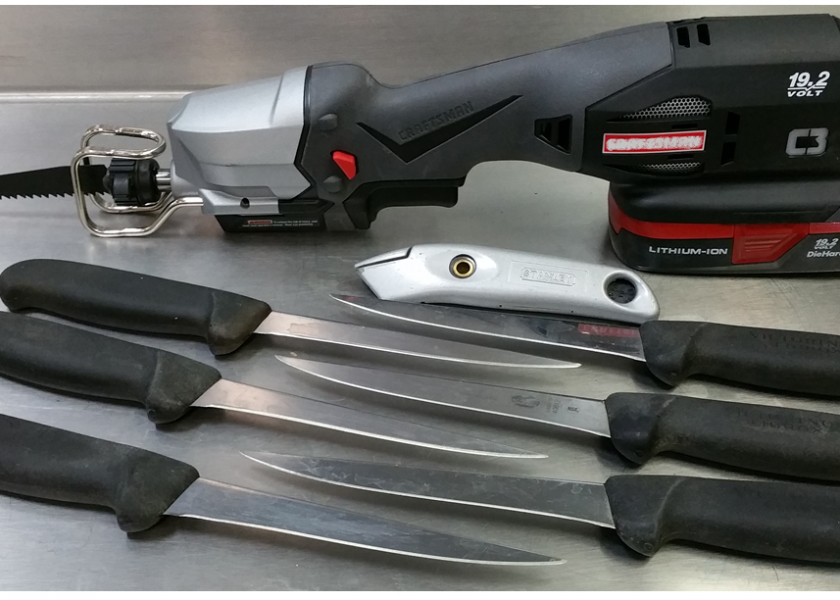Tools Of The Trade for In-Field Necropsies

This article was written by Dr. Dee Griffin, an Oklahoma State University College of Veterinary Medicine alumnus. He recently received the Amstutz Williams Award, which is the highest award given by the American Association of Bovine Practitioners. He was on the faculty at Texas A&M University College of Veterinary Medicine and Biomedical Sciences until retiring in 2021.
The right tools can make quick work of a routine necropsy. The opposite is true as well. Here are some of my best tool purchase recommendations.
A motorized sharpener. My personal favorite motorized sharpener for necropsy knifes is the Hantover Knife Sharpener #47090. It retails for about $250 and features a flap sanding wheel and felt buffing wheel coated with pumice or buffing compound. It produces an excellent durable convex (rounded) edge. Delta 23-700 or 23-710 are exceptional sharpeners for the money ($150 to $160).
The WEN Sportsman’s Edge (#2910) or the WEN Wet Stone Sharpener (#2908) are good, inexpensive motorized alternatives ($50) to a professional system, available at hardware and sporting goods stores.
Other tools to consider:
If you like to sharpen by hand, get the largest flat abrasive you can afford. A 2” X 10” EZE or DMT fine (600 grit) or very fine (1200) grit diamond hone. They are expensive (over $75) but worth every penny. I get along with smaller flat abrasives, but I rest my thumb on the edge of the abrasive and move the abrasive across the edge of the blade. The most important thing to remember is to keep a constant angle between the blade and the abrasive. You can use your thumb (short blades), thumb and finger (long blades) or a 1/4” spring paper clip for an edge guide.
Good knives: Eicker, F-Dick, or Forschner, flat-bladed, stiff-backed, 6-inch boning or sheep skinning knives work great for feedlot necropsies. A box of six good knives sells for approximately $60. My favorite knife sources are Hantover or Koch. These two companies also sell many of the following items.
Single bit ax. Put a fiber glass handle in it. Use it for most of your initial skin cuts to save your knives for cutting tissue. Axes are the preferred tool for examination of the CNS (use the lateral canthus as a guide). Keep a new, flat file (oil it after use to protect from rust) or coarse stone (100 to 200 grit) handy for touching up the edge of your ax.
Smooth (polished-no cut) or fine-cut steel
More cutting edges are wrecked by the harsh use of a steel than are improved, so be gentle. They cost approximately $15. Forschner makes a combination steel that includes both a polished and fine-cut side.
Avoid a regular or coarse steel, and avoid diamond steels/sharpeners unless they have extremely fine grit.
Ceramic stick (round) hone: It’s good for finishing or touching up a cutting edge and retails for $10 to $15.
Safety (cut resistant) gloves: They retail for about $10.
A parting note: If you find you cannot keep an edge on your knife, check to make sure you have selected the proper blade transition angle for the job you are asking the cutting edge to do. If you still can’t keep it sharp, make it a tail knife or box knife, or just get rid of it.







